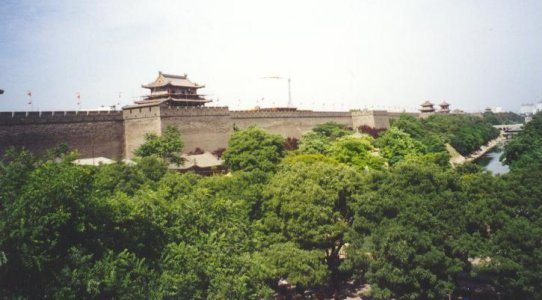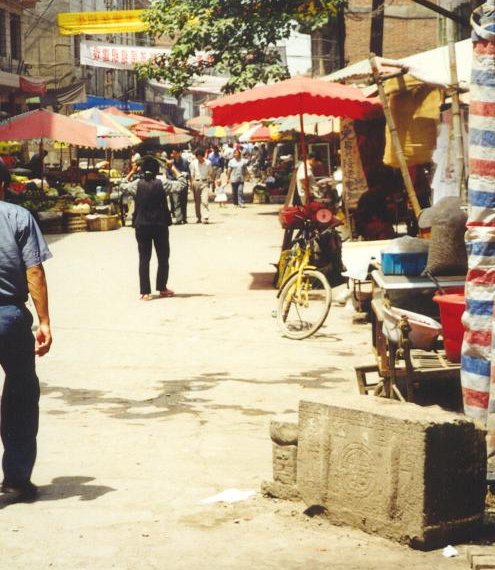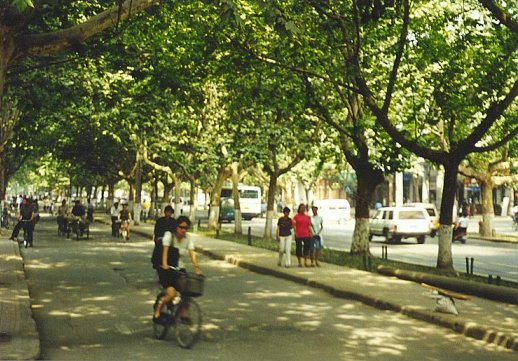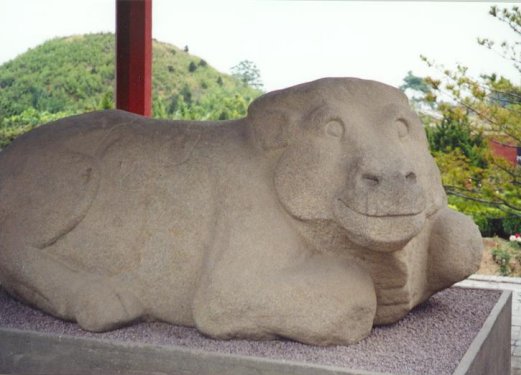XI'AN China's Ancient Capital
Chinese civilization has persisted across the millennia, through a score of dynasties well into the modern era. For reason of this apparent continuum an outsider could readily be forgiven for mistaking this course as an ongoing evolutionary progression however, cultures, like political forces, ebb and flow.
If measured by the artistic and cultural advancement historians generally consider that China's greatest epoch was the middle T'ang period. At this time in the late ninth century the capital of the empire was sited in north central China, where the city of Xi'an today boasts a splendour of archaeological treasures.
In ancient times, the population of Xi'an is estimated to have reached a peak of two million and the city for a thousand years vied with Rome and Constantinople to be the largest city on earth, although for considerably longer than this the fertile river valley had been the principal capital of the Chinese civilization.
Today the city is a relatively prosperous provincial capital with a population of six million, which by Chinese standards is not particularly large. For a long time it has interested me as a tourist destination because of its historical importance and I was delighted to discover on my visit that in this respect there was so much more there to be seen than I had anticipated. Indeed I was astonished to be able to learn so much as to the importance of Xi'an and the surrounding area - not just in China's long history, but for the whole of mankind.
This, my first visit to China, was solely a fly in/fly out trip for three weeks in Xi'an. It was immediately clear from the construction at the airport and the expressways one could observe from the air being built, that substantial resources are being applied to rapidly develop the area and by the end of my stay I felt I may have been lucky to have caught it before the savour of the ancient sites was buried forever beneath tourist coach parking areas. Nevertheless, one didn't have to go far beyond the well beaten trail to find the entire populace staring at one and even holding their babies up to view the white alien.
Of the architecture constructed during or prior to the T'ang dynasty, only a handful of brick pagodas (mostly rebuilt) and the imperial tombs survive, although some of the stonework in the city's great mosque is believed to date back to these times. Nevertheless, the traditional style of the more recent buildings of the city are wonderful, particularly the 14 km of high, grey brick 600 year old city walls surrounded by a moat.

The sculptures and ceramics in the museums were world class, just marvelous, but perhaps even more significant were the collections of engraved stone memorials which record the history and literature of China. One museum alone must hold a very significant portion of the world's original texts of more than 1000 years old, some of which are whole books dating back over two thousand years. These are the primary texts which, from the time the stone was engraved, have been used for printing (through rubbings) and have served to transmit the culture of China.
Also close to Xi'an are the entombed warriors which were undeniably spectacular, but as artworks, in my view, not as imaginative nor as interesting as the much later T'ang ceramics.
A major surprise of my visit was the contemporary society. To some extent Xi'an is a showcase city and therefore not necessarily representative of the whole of China today, but the people did not appear to regard their lives as oppressed nor walk around appearing as though they resented the appropriation of their human rights. No one came up to me in the street and complained about the government - a common occurrence in many other countries. There was no sense of a ubiquitous presence of armed police and military.
In Xi'an, people on the streets cycled about singing and generally seemed healthy and well fed, relatively prosperous, well educated and their lives seem considerably less regulated than ours in computer ridden states. Compared to other mega-population countries I have visited like India, Indonesia, Pakistan and Thailand (not to mention what one sees on television of the current state of countries in Africa) the population seemed to enjoy an infinitely better quality of life and I returned with quite a different view about the government management. In travelling all through the city - and I visited every temple in Xi'an - I never saw a shanty town.

A poor district - clean streets, abundant food and people well dressed.
Despite the city's population it did not feel over-crowded nor the streets particularly congested. The saving grace was the few motorcycles which in contrast plague the streets of most Asian cities. There were some cars and buses but almost everyone moved around on bicycles, which made the city so much quieter and the air noticeably cleaner than significantly smaller cities elsewhere in the third world. And for those with cars, street parking was available everywhere.
Best of all, trees were growing everywhere. In the city centre, streets were choked with plane trees seven stories high and beyond, along new avenues, venerable old trunks had been transplanted to provide a ready canopy. In the countryside the roads were lined with trees as in France. Having been cultivated for over five thousand years, the wide valley in which the city is located retained no forest, but when seen from afar every town and village first appeared as a coppice among the wheat fields on the plain.

A typical city street.
In addition to the comfort this afforded, in the city there was a feeling of safety. Of course everyone selling a tourist something asks for the maximum they think they can get away with, but serious crime seemed unknown. The greatest difficulty as a visitor was is the language barrier. Indeed, other than "hello", a knowledge of English beyond the front desk of the hotel was virtually nil and therefore the English/Chinese dictionary and city map were utterly indispensable.
More than with respect to just getting around, however, the language barrier means it is almost impossible to gain a sure understanding of what people actually think about anything. It is only occasionally that one meets someone with whom a conversation is possible, on a city bus for example, a student keen to practice their English may speak to one, however the limitations of language constrain the ability of the casual tourist to garner more than a superficial insight into society there today.
Nevertheless, the artworks in the museums will more than satisfy in full the most demanding of visitors.

Han dynasty tomb sculpture ca200BC
Note on the images: The snaps that I have used on this page were selected on the basis of illustrating my responses to Xi'an and China. Books on the museums, the entombed warriors or the city sights will better show these.

A souvenir I regret not buying - a cat fur coat.